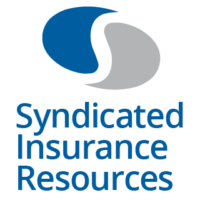Paying your home insurance through escrow can be convenient, but if you want to change insurance providers, sometimes it can become a little tricky. Among other things, you need to make sure your mortgage lender knows where to send your premium payment. Otherwise, your premium could go to the wrong carrier causing a lapse in your home insurance coverage. While you and your insurance agent can rectify the situation, it can cause your mortgage payments to drastically increase over the next 12 months if an escrow shortage occurs.
Step 1: Find a new carrier
If you want to change homeowners’ insurance companies, your first step is to shop around. In some areas of the country like Coastal Florida (for example), some quotes will exclude wind coverage. You have to ask questions and it’s best to work with an agent to make sure you compare apples to apples. Once you get quotes and choose a company, you can proceed to the next step.
Step 2: Confirm the mortgagee’s information
Before you purchase your new policy, you’ll need to know exactly how your mortgage lender should be listed. This is called the mortgagee clause and includes your lender’s official name and the address to all policy documents will be sent.
The mortgagee clause is not just your lender’s name and the address to which you send your monthly payments; most companies also have unique addresses for insurance documents.
To ensure you include the correct information on your new insurance policy, call your mortgage company to confirm. Then, relay the information to your new insurance carrier before you purchase your new policy. Often, the purchase of the policy automatically generates documents to be sent to the mortgage on file, so the mortgagee clause needs to be correct from the start to avoid confusion.
Step 3: Purchase your new policy
Once you know the mortgagee clause on your new policy is correct, you can go ahead and finalize the purchase of your new policy. An agent or company representative will walk you through the steps, but you’ll likely have to sign an application and any other required forms related to your coverage. Because you’ll pay your insurance with escrow, you will not need to make a payment out of pocket. Your new insurance company will send a bill to your mortgage institution.
Step 4: Cancel your prior policy
Now that you’ve purchased your new policy, contact your current home insurance carrier to cancel your prior policy as of the same date your new policy is effective. Ensuring the dates are the same will prevent any overlap or gap in coverage. Even if your new policy is effective in the future, it’s still a safer process to start the new policy before canceling your old one. That way, if there are any issues getting your new policy started, you still have coverage through your old policy.
Step 5: Notify your mortgage company
Your mortgage company should receive a cancellation notice from the prior insurer and a declaration page from the new insurer, but it can help avoid confusion by letting your mortgage company know that you’ve switched insurance providers. You’ll likely need to provide the cancellation date of the prior policy and the effective date of the new policy (which should be the same date to avoid a lapse), as well as the name of the new company and the policy number.
Step 6: Send any premium refunds to your new escrow account
You may receive a prorated premium refund from your prior insurer if you switched insurance carriers mid-term. If you switch companies at your renewal period, you won’t get a refund, as all of your annual premium has been used.
Generally, you should contact your mortgage company to find out how to send this money back to your escrow account. While you could keep it, doing so could mean that your escrow will have a shortage and you’ll have to pay higher monthly mortgage payments to rebuild your escrow amount.

